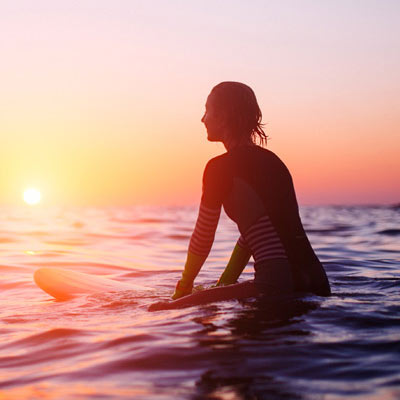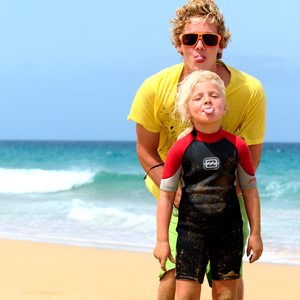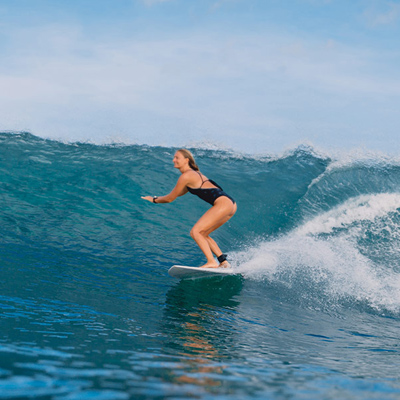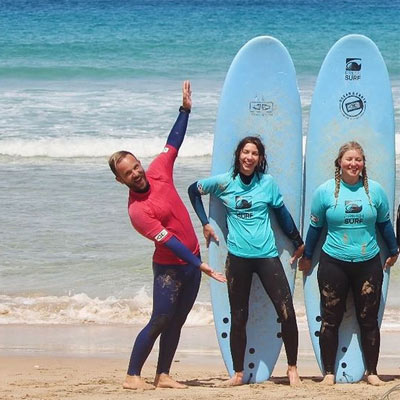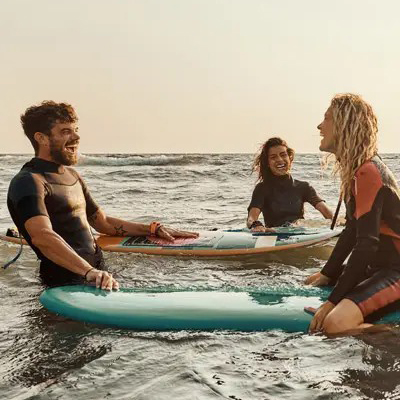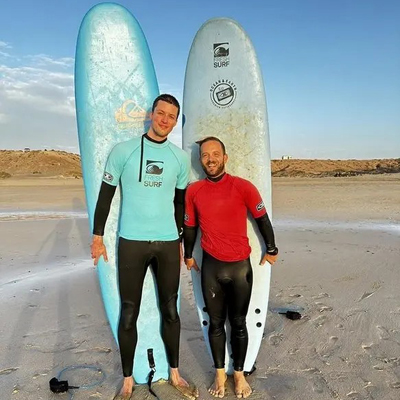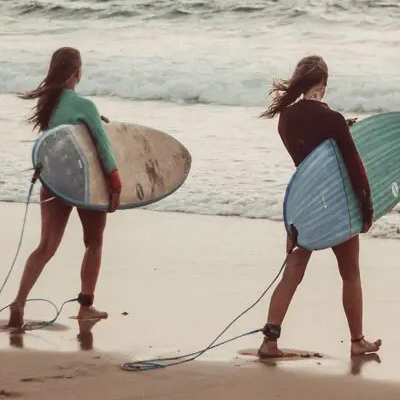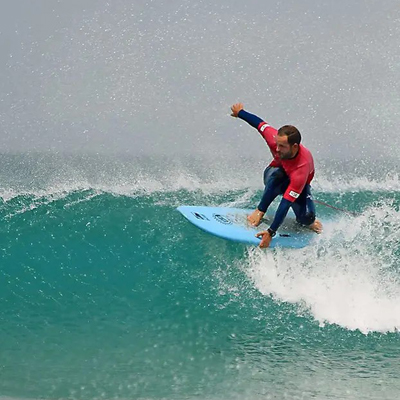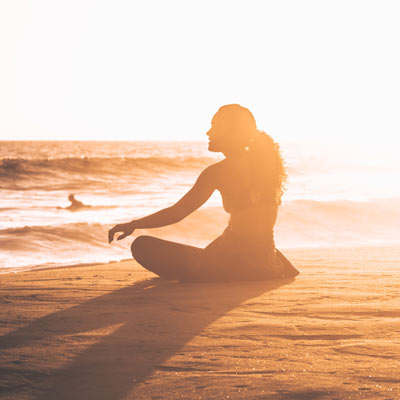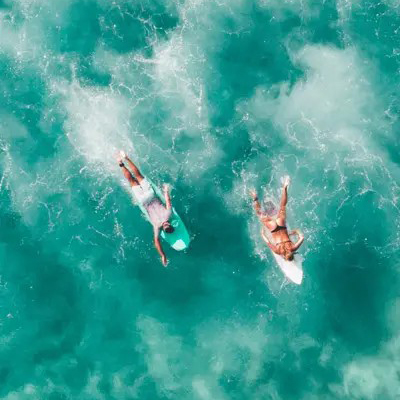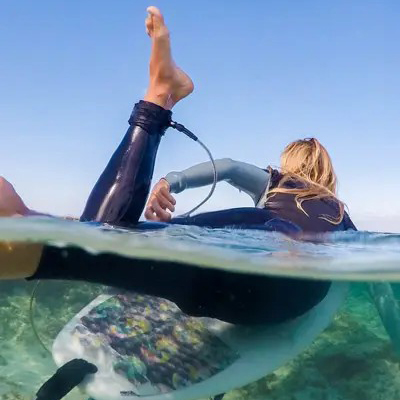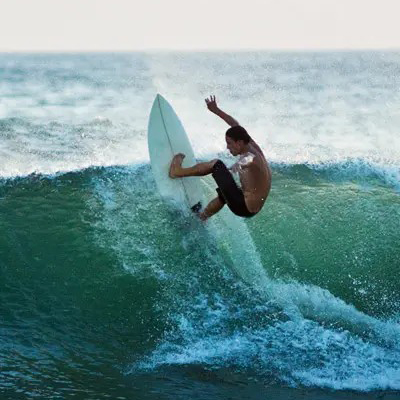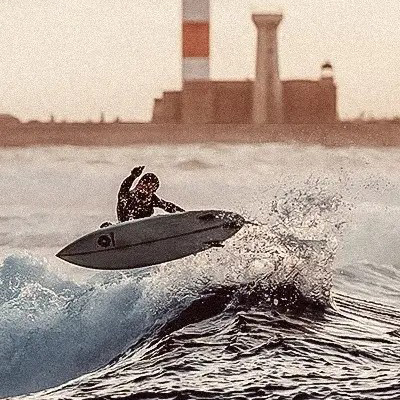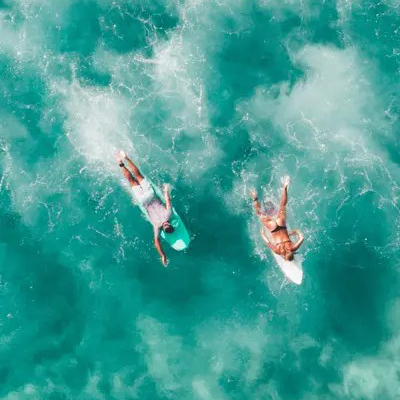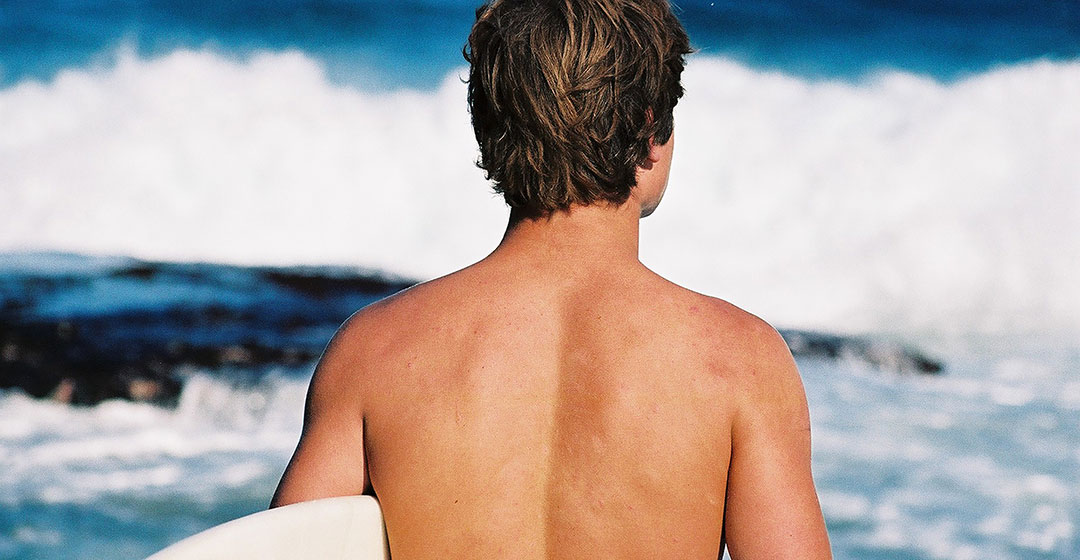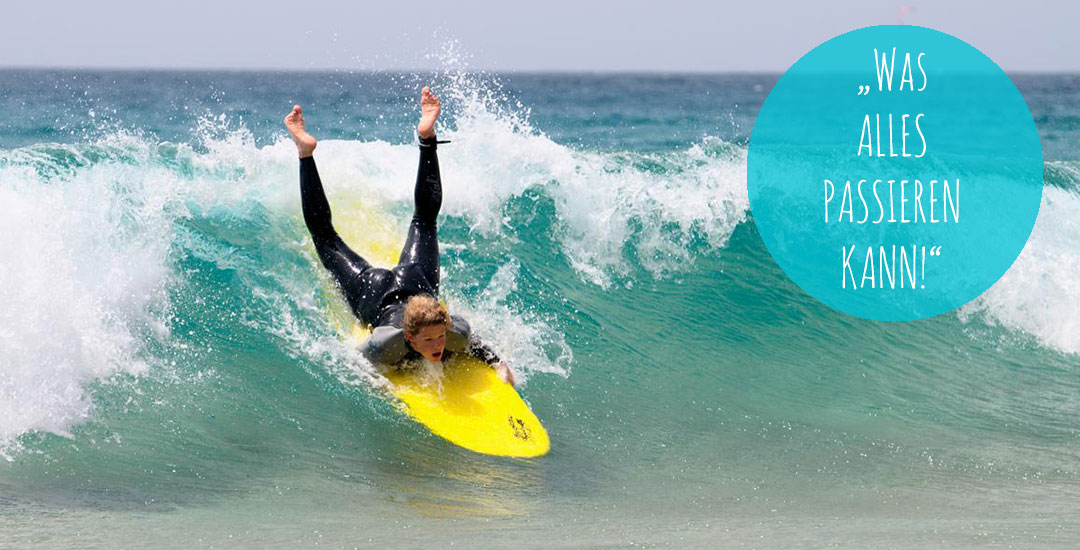Learn to surf
The Beginners Guide
Learn to surf the beginners guide
for surf beginners
Our Beginners Guide for surf beginners with all the information you need to successfully start your surfing life.
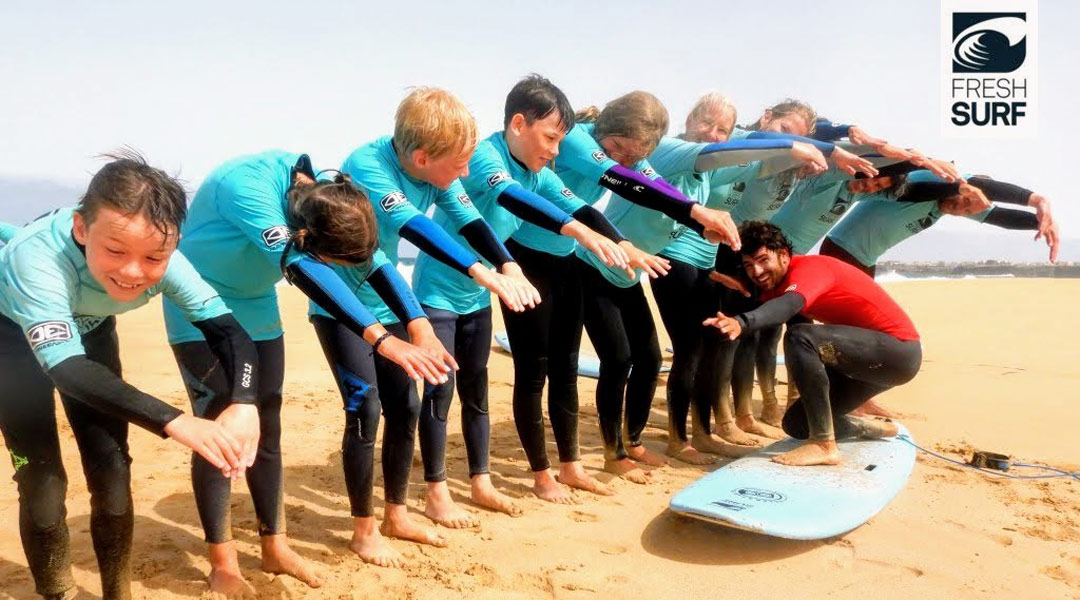
Your surfing adventure starts here!
Feel the energy of the waves, experience unforgettable moments in the water and become part of the surfing community!
Learn to surf on Fuerteventura – with professional surf instructors, perfect conditions and an atmosphere in which you immediately feel at ease. Whether it’s your first time on the board or you want to improve your skills – we’ll guide you step by step!
How do you find the right surf camp?
How do you find the right surf school?
Why learn to surf?
Why surf with FreshSurf?
Find the right surf camp?
Find the right surf school?
Which steps to learn to surf?
What makes a good surf course?
How quickly can you learn to surf?
Is learning to surf difficult?
Steps to learn to surf?
What makes a good surf course
What is the right surf spot?
Avoid common beginner’s mistakes
Prerequisite for learning to surf?
Preparing for your surfing vacation
The right surf spot for beginners
Common beginner mistakes
Success stories & testimonials
Getting up – the take-off
Important tips for beginners
Learning to surf safely
Success stories & reports
Getting up - Take off
Surf theory & surf knowledge
Surfing Rules & Surfers Etiquettes
What material do you need?
Proper nutrition for surfers
Surf theory and surf knowledge
Rules & Surfers Etiquette
LIVE FOR
THE SURFING
& WAVES
Why learn to surf?
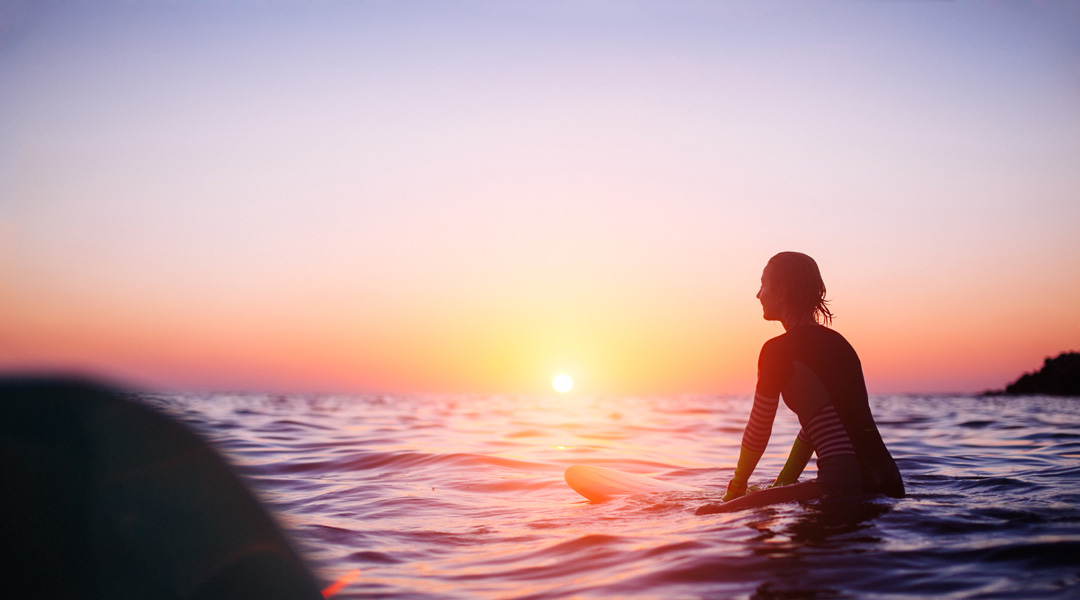
Surfing is not just a sport – it’s a way of life!
- Feel the freedom: The waves, the water, nature – surfing means pure vitality.
- Start a new adventure: Whether alone or with friends – surfing connects!
- Sport with fun: You train your whole body at the same time.
Fuerteventura is the perfect place to learn to surf! The island offers constant waves, pleasant temperatures and fantastic beaches all year round.
Why learn to surf with FreshSurf?
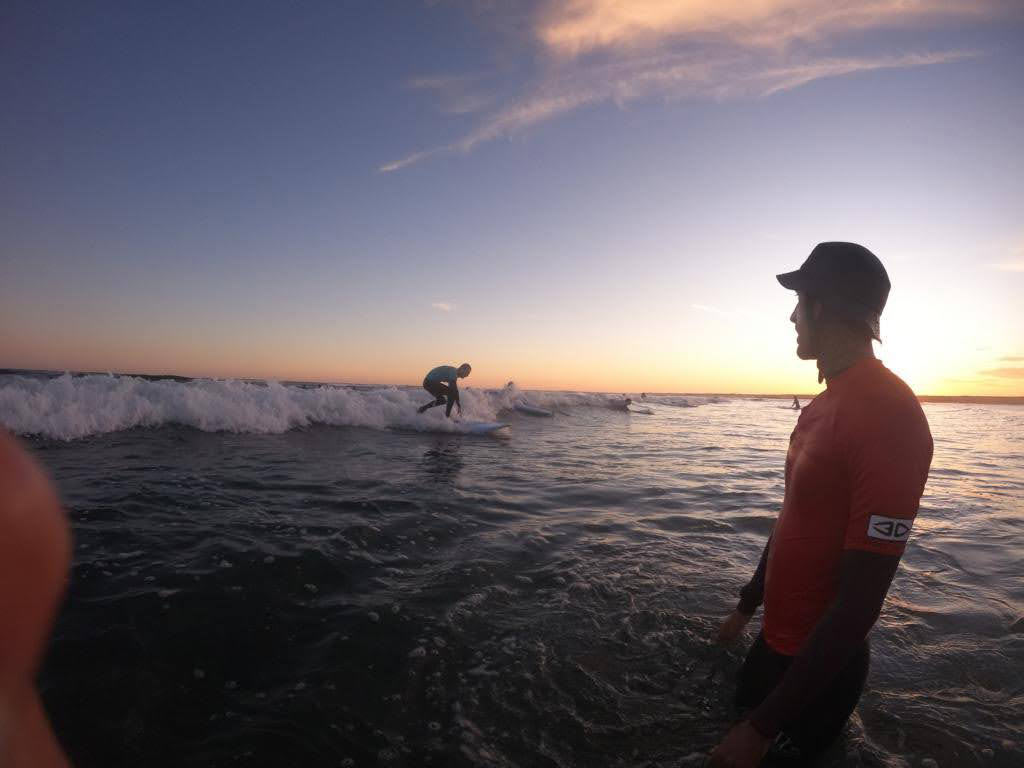
- Experience & expertise – Years of experience
- Individual support – Small groups, intensive, personal support for rapid progress.
- Perfect conditions – Consistently good waves and ideal learning conditions for every surfing level.
- Family atmosphere – Become part of the FreshSurf community.
- Sustainable learning – modern teaching methods & targeted coaching.
How do you find the right surf camp?
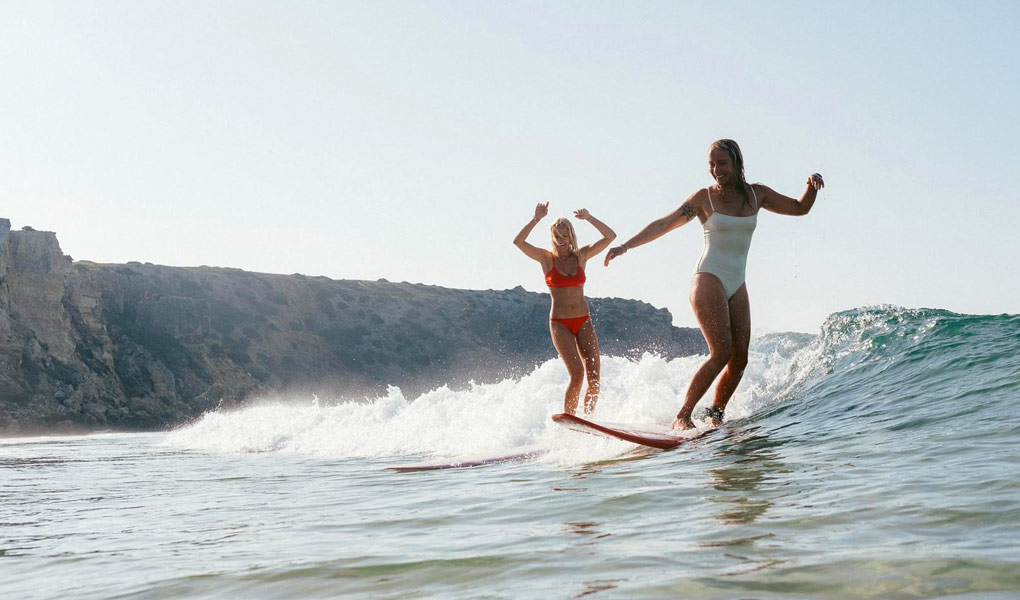
Not every surf camp is the same, pay attention to the following points:
- Qualified surf instructors with a lot of experience and patience for beginners
- Accommodation & atmosphere: Pay attention to reviews and the general atmosphere at the camp – do you feel welcome?
- Location & wave conditions
- Group size: Small groups allow for better supervision and faster progress.
- Flexibility & offer
How do you find the right surf school?
What makes a good surf school?
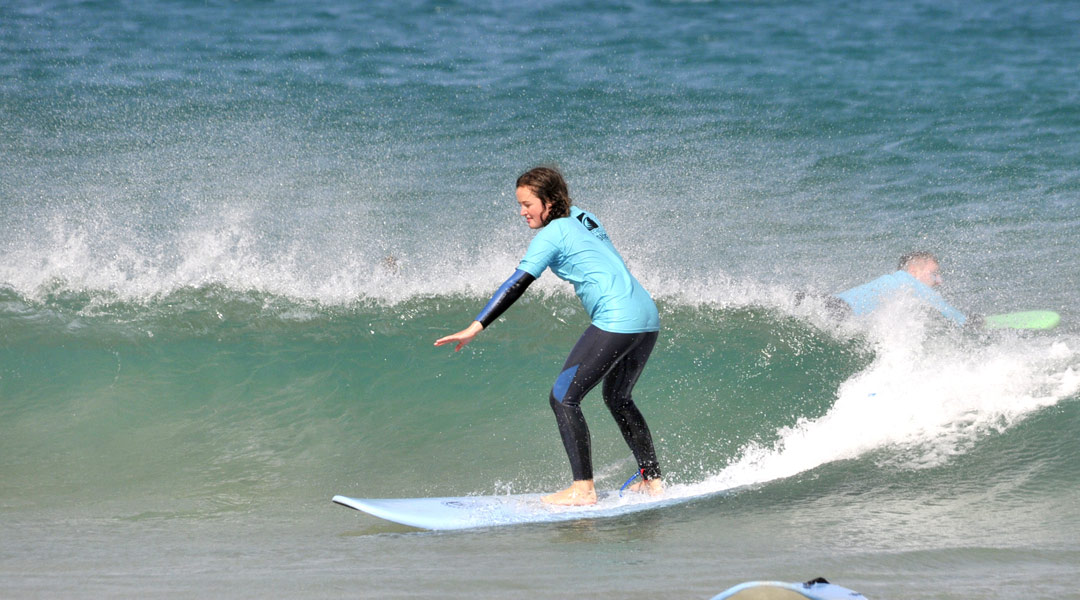
Certified and experienced surf instructors – Instructors should have official qualifications and experience in teaching different levels.
Small group sizes – The fewer students per teacher, the more individual attention you receive, which significantly accelerates your progress.
High-quality equipment – The surf school should provide modern softboards for beginners and well-maintained equipment.
Didactic concept – Structured lessons with theory, practice and feedback make the learning process more effective and sustainable.
FreshSurf fulfills all these criteria! Our certified coaches, small groups and tailor-made courses offer you the perfect environment to learn to surf quickly and safely!
How quickly can you learn to surf?
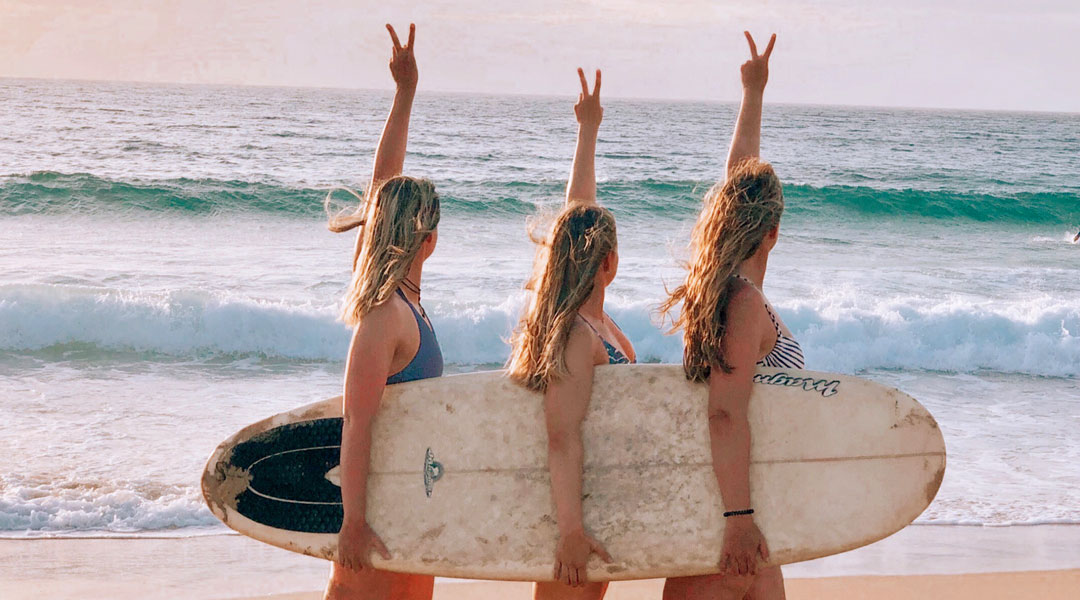
Everyone learns at their own pace! While some learn the first wave after a few hours, others need a little longer. Factors such as Fitness, sense of balance and wave conditions influence your learning curve. With regular training, you will see progress quickly!
Is surfing hard?

Surfing is a challenge, but not an insurmountable one! The first few lessons are often intense, but with the right technique, patience and motivation you can master surfing step by step. Our trainers will guide you individually to give you the best possible start!
What are the steps for learning to surf?
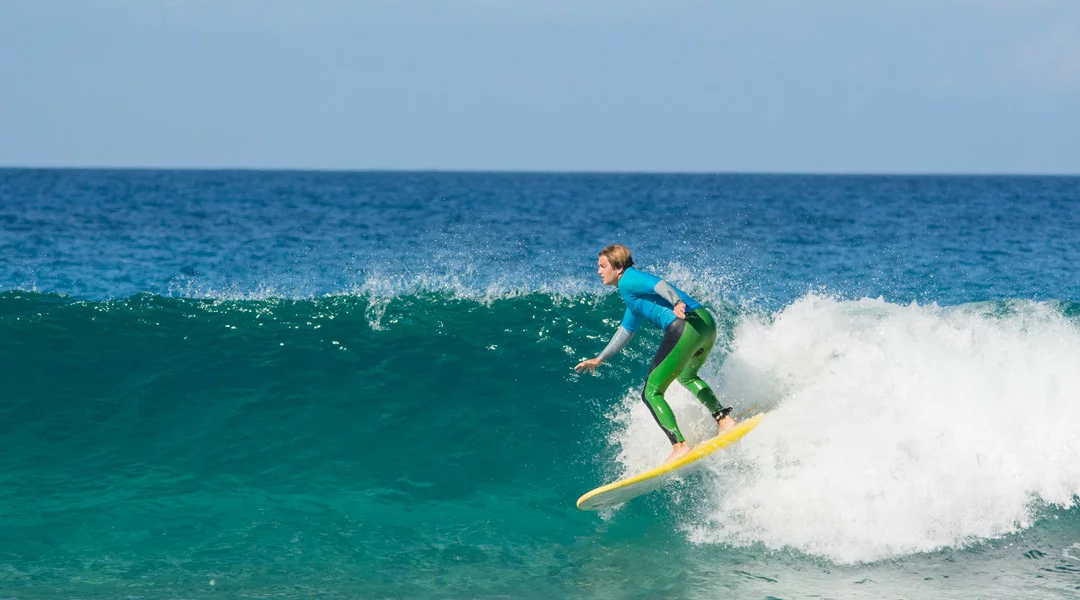
1. Theory & dry runs – Understand the waves, your board and the right paddling technique.
2. First attempts in the water – Practice getting up (take-off) and the right timing.
3. Improve balance & control – Learn to read the wave and control the board with precision.
4. Advanced techniques – Turns, wave selection and riding the green wave.
What makes a good surf course?
What criteria do you use to recognize a good surf course?
A quality surf course is crucial to your learning experience and progress. Pay attention to the following points to make the most of your time in the water:
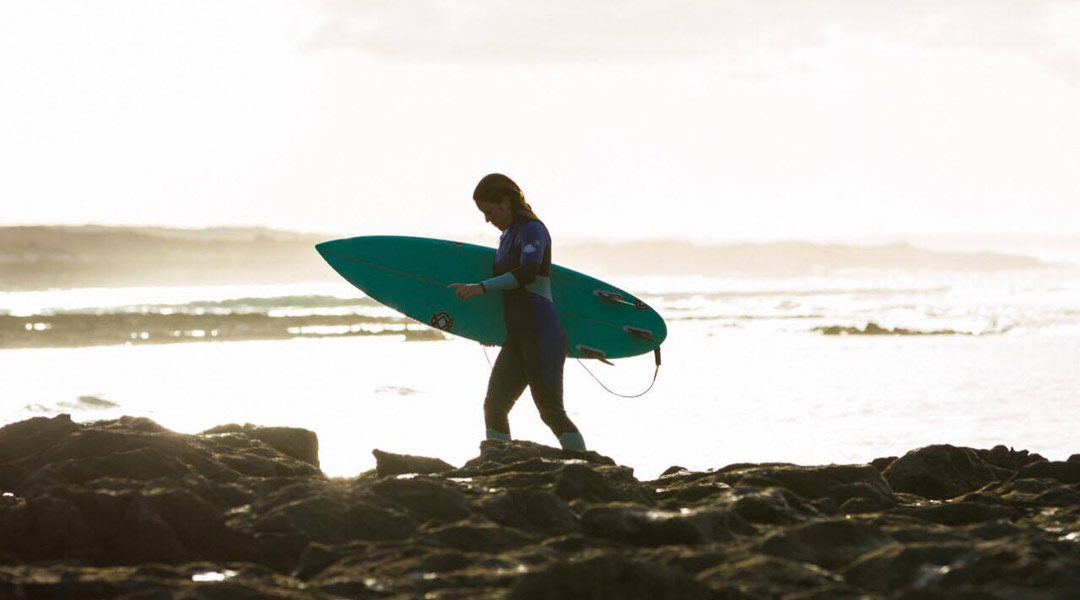
Experienced and certified surf instructors
A good course is led by qualified and experienced coaches who not only teach you techniques, but also ensure your safety.
Small groups for individual support
The smaller the group, the more time your teacher can devote to you. Intensive support ensures rapid progress.
High quality equipment
Modern softboards for beginners and well-maintained equipment are essential for safe and effective learning.
Methodical learning structure
An ideal surf course combines theory, practice, video analysis and individual feedback for long-term success.
The right surf spots for your level
A good surf course will take you to spots that best suit your ability. This gives you safe conditions and the best chance of riding waves quickly.
FreshSurf fulfills all these criteria!
Our surf courses offer you first-class support from experienced coaches, small groups and an optimal learning environment on Fuerteventura.
What are the requirements for learning to surf?
Surfing is accessible to everyone, but a few basic requirements will help you to progress more quickly:

Basic fitness & agility
A good physical condition will help you to stay in the water longer and keep your balance better. Simple exercises such as push-ups and planks can help you get started.
Balance & coordination
Good body awareness makes it easier for you to stand on the board. Balance exercises on a balance board or yoga can prepare you for this.
High quality equipment
Modern softboards for beginners and well-maintained equipment are essential for safe and effective learning.
Patience & openness
Learning to surf takes time. Be prepared to make mistakes, laugh and learn from every wave.
What is the best way to prepare for learning to surf?
Learning to surf works best if you are fit and well prepared. If you have a good level of fitness and are in good shape, you will probably get on much better in the water than a couch potato. Here are some tips:

Improve your condition – Surfing requires stamina, strength and flexibility. Swimming, yoga and functional training will prepare you perfectly.
Paddling exercises – The right paddling technique is essential for surfing. Dry land exercises or swimming with crawl movements help you to strengthen your arm power.
Train your balance – Exercises on a balance board or slackline can improve your body awareness and help you to become stable on the surfboard more quickly.
Mental preparation – Be open to new experiences, patient with yourself and ready to learn from your mistakes. Surfing is a process – enjoy every wave!
What is a good surf spot for beginners?
What should you look out for on the beach?
Not every surf spot is suitable for beginners. Pay attention to the following criteria to find the best conditions for your entry into surfing:
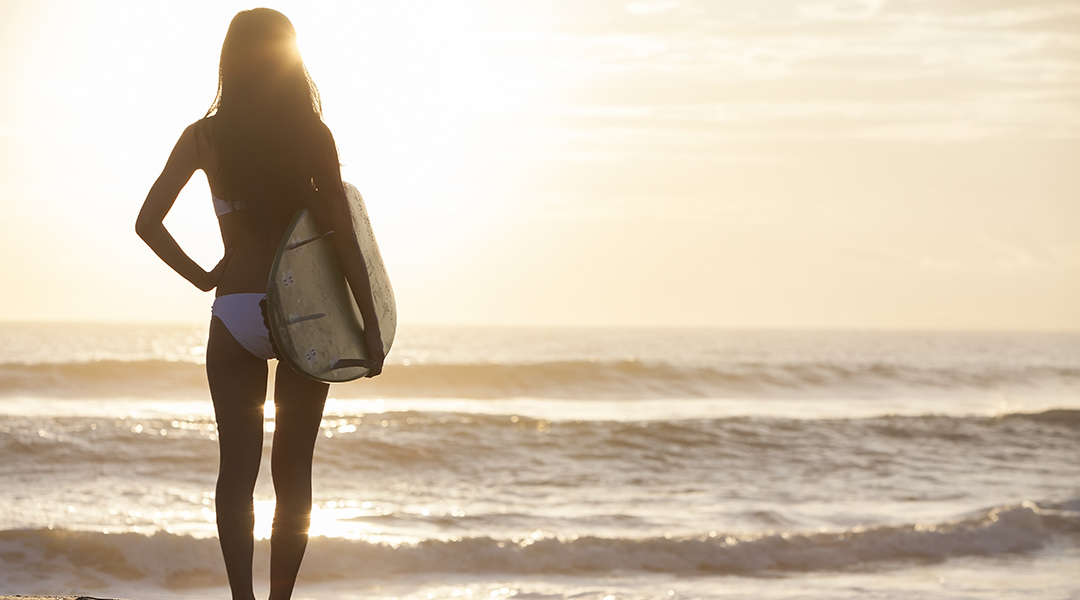
Long white water waves – An ideal beginner surf spot offers gentle waves breaking far out so you have plenty of time to practice your take-off.
Favorable wind and swell conditions – Too strong currents or high waves can make learning difficult. Small to medium-sized waves of around half a meter are ideal.
Sandy beach instead of reefs or rocks – Beaches with a sandbank are particularly safe and offer ideal conditions for your first wave rides.
The right time and the right place – A local surf school can help you find the best spot depending on the time of day, tide and wind direction.
What are the most common mistakes when learning to surf?
Learning to surf is a long process and you can really do a lot of things wrong, but if you pay attention to certain things and take them into consideration, you can do most things right from the start. Here you can find out what you should pay attention to!
Important tips for beginners learning to surf
What you should look out for if you want to learn to surf.
We have a few essential tips for you to ensure that your start in surfing goes smoothly:
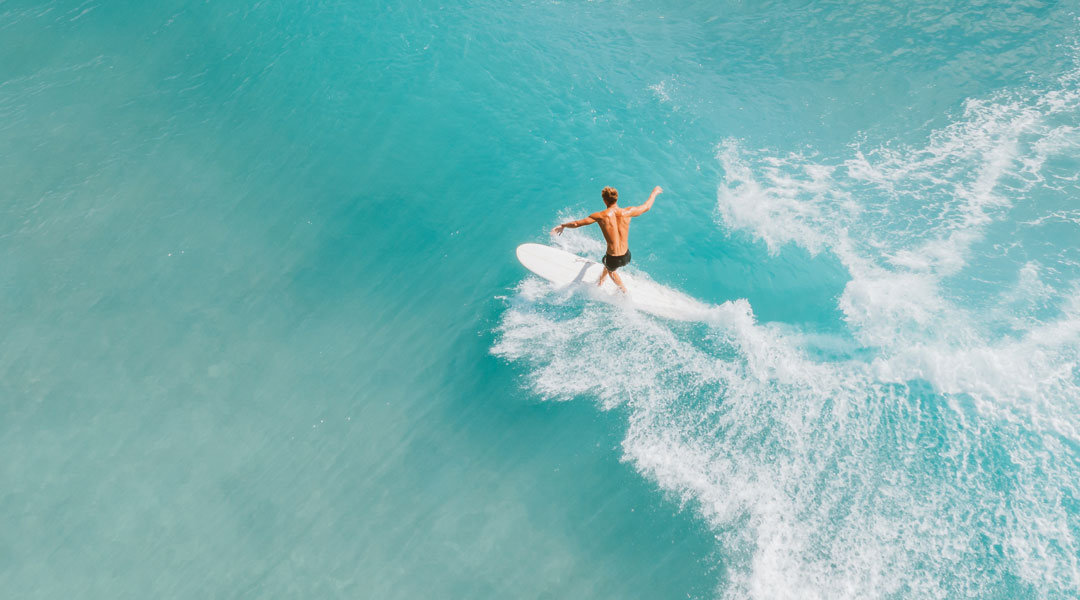
1. develop a feel for your surfboard
The first few days are there to familiarize yourself with the board. Don’t lie too far forward (risk of nosedive) or too far back (the wave won’t take you with it).
2.find the right timing
Learn when to start paddling to get into the wave in the best possible way. A good eye for the distance to the wave is crucial.
3. small groups & professional coaching
At FreshSurf you learn in small groups with a maximum of six students per surf instructor. This means you get individual feedback and improve faster.
4. take your time & don’t put yourself under pressure
Surfing requires patience. Stress blocks your learning. It’s best to plan a week or two to make relaxed progress.
5. self-motivation & frustration tolerance
Set yourself realistic goals and enjoy the small successes. Everyone falls into the water – that’s part of it!
6. paddling is the key
You will be paddling around 90% of the time. Good technique and stamina are essential. Find out more in our paddling guide!
Learning to surf safely
How to minimize your risk of injury.
Safety is the be-all and end-all when surfing! So that you can enjoy surfing to the full, you should follow a few essential safety rules:
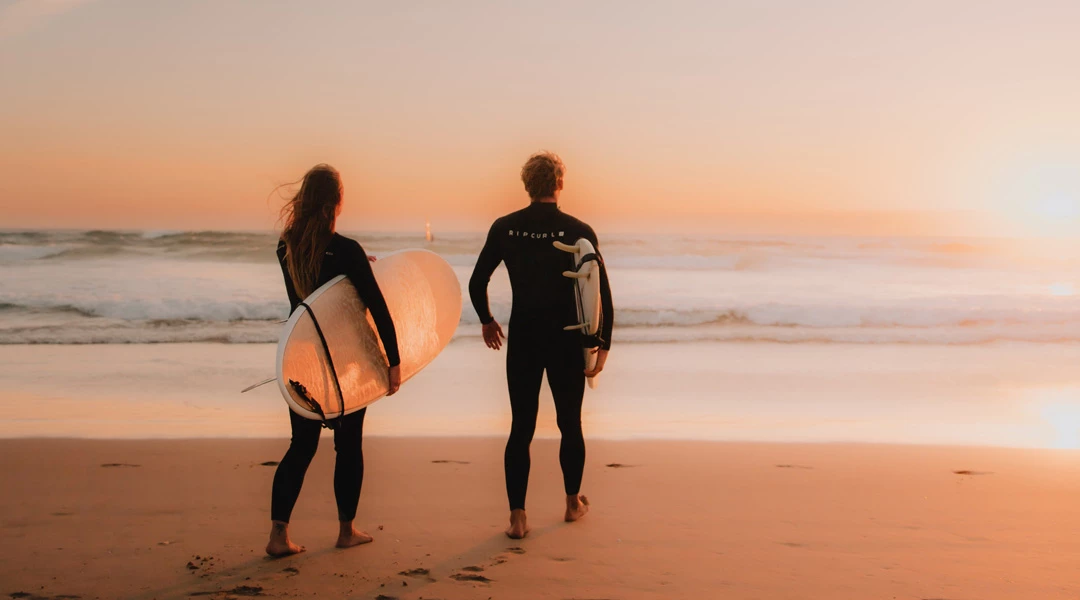
Knowledge of surfing rules & right of way rules – There are clear unwritten rules in the water that you should know in order to avoid collisions and dangerous situations. These include the rule that whoever is closest to the wave breaking point has right of way.
Know first aid & emergency measures – It is important to be familiar with basic first aid measures in the water. This includes what to do if someone can no longer control a wave or gets caught in a current.
Surfing in safe conditions – Choose a spot with conditions that suit your surfing level. Waves that are too big or strong currents can quickly become dangerous for beginners.
Understanding currents & tides – Currents are one of the biggest dangers when surfing. Find out about riptides, currents and the best strategy for getting out of a current safely.
The right behavior in the water – Always keep a safe distance from other surfers and don’t let go of your board uncontrollably to avoid accidents.
At FreshSurf we attach great importance to safety! In our courses you will learn everything you need to enjoy surfing safely and with fun!
Learning to stand up while surfing
How to learn the take-off quickly.
The take-off is one of the most important steps in learning to surf – and also one of the most difficult. A clean take-off ensures that you are stable on the board and can glide with the wave. Here are some tips to improve your take-off:
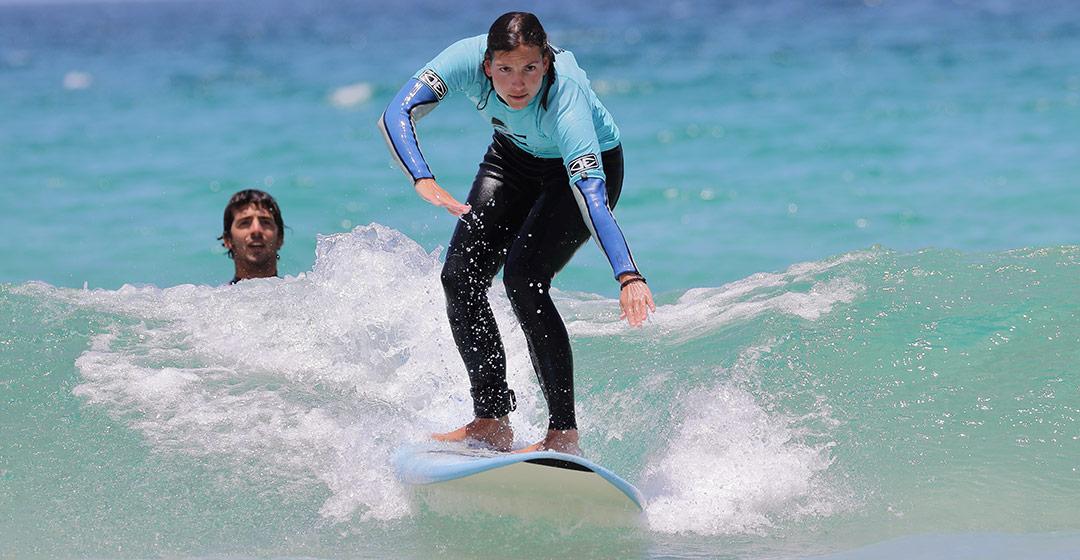
The right position on the board – Make sure that you are lying in the middle of the board. Your head should be roughly level with the center of the board. Too far forward will lead to a nose dive, too far back and you will miss the wave.
Explosiveness & body tension – The take-off is a quick movement. Train your arm strength and body tension to be able to straighten up smoothly.
The foot placement – When standing up, your feet should be shoulder-width apart on the board. Your back foot lands first, followed by your front foot.
Looking ahead – Look where you want to go! Many beginners look at their feet – this often leads to an unstable stance.
Dry practice on land – Practice the take-off on a mat or balance board to internalize the movement.
With the right technique and practice, you will optimize your take-off and soon be riding your first waves with confidence!
The right material for learning to surf
Wetsuit, surfboard and what else?
The right equipment can make the learning process much easier. Here are the most important things you need to get started with surfing:
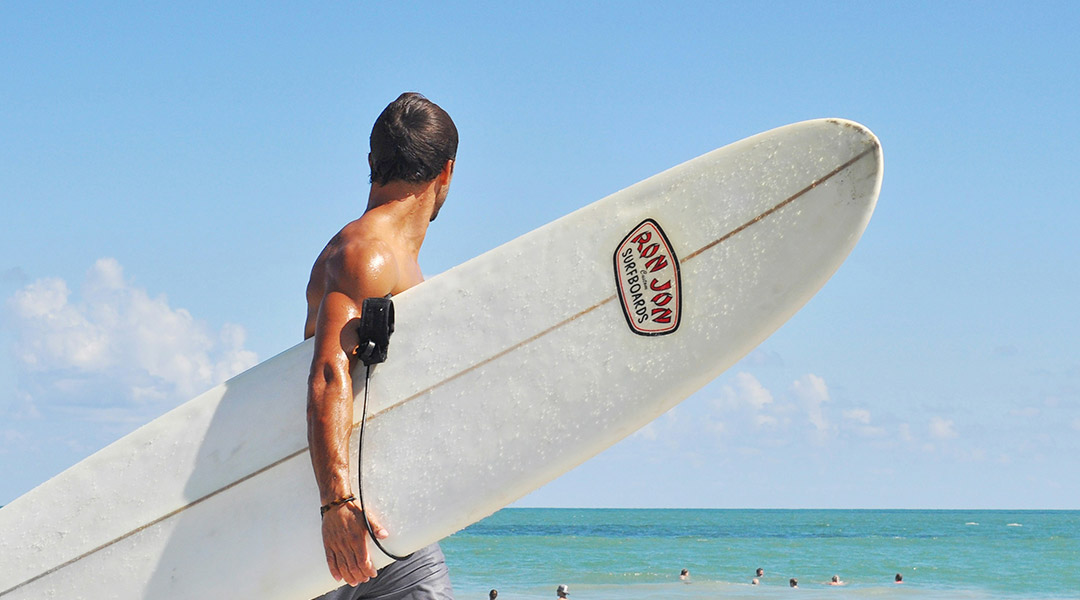
The right surfboard – Beginners should start with a soft-top board. These are stable, have a lot of buoyancy and are safer in the event of a fall.
The right wetsuit – The water temperatures on Fuerteventura often allow you to surf with a 3/2mm wetsuit. It keeps you warm and protects you from sunburn and abrasions.
Essential accessories – Important items such as a leash (to attach the board to the foot), surf wax for a better grip and a UV-resistant zinc cream should not be missing from any surfing equipment.
Teste unsere hochwertigen Leihboards und finde dein perfektes Setup!
Ernährung für Surfer
Wie sieht es mit Fitness & Gesundheit beim Surfen aus?
Eine ausgewogene Ernährung ist essenziell, um beim Surfen leistungsfähig zu bleiben und deine Regeneration zu unterstützen. Hier sind einige Ernährungstipps für Surfer:

Kohlenhydrate für Energie – Komplexe Kohlenhydrate wie Haferflocken, Vollkornprodukte oder Bananen liefern langanhaltende Energie für deine Surf-Sessions.
Gesunde Fette für Ausdauer – Avocados, Nüsse und Samen helfen dir, deine Energie über längere Zeit stabil zu halten.

Proteine für die Muskelregeneration – Nach dem Surfen sind Proteine wichtig, um deine Muskeln zu regenerieren. Setze auf Fisch, Eier, Hülsenfrüchte oder hochwertige pflanzliche Proteinquellen.
Ausreichend Wasser trinken – Dehydration kann zu Muskelkrämpfen und Erschöpfung führen. Achte darauf, vor und nach dem Surfen genug Wasser zu trinken.
Success stories and testimonials
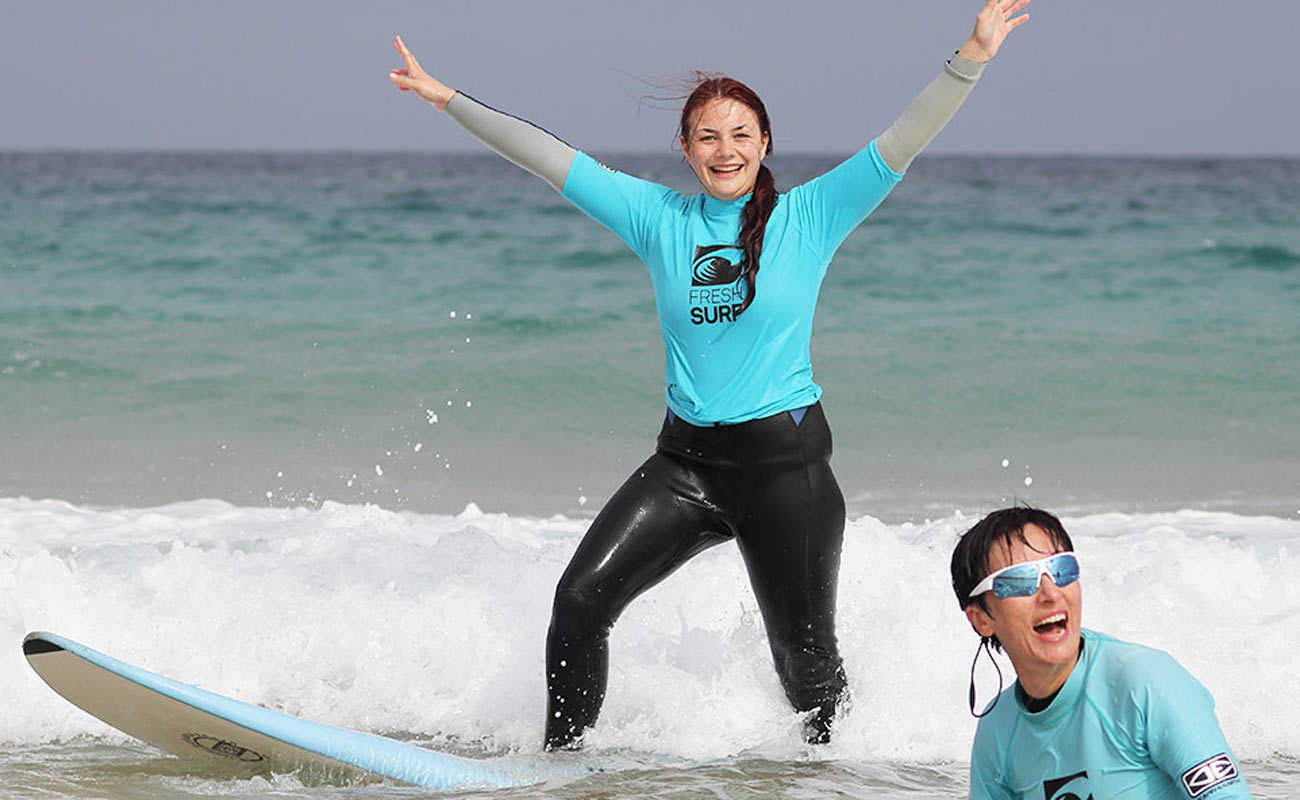
Anna (28, from Germany): “My first surf lesson was an incredible experience! The instructors were super motivating, and I caught my first wave within the first few days!”
Ben (35, from Austria): “I finally wanted to learn how to surf properly – and at FreshSurf, I received the best coaching! The video analysis helped me a lot.”
Background Information on Surfing – Surfing Theory
Here you’ll find information on wave formation, weather and wind, tide theory (everything about ebb and flow), how to read a surf spot, where to find relevant surfing information, our surf ABC, surf history, equipment knowledge, and much more.
Right of Way Rules or Surfer’s Etiquette
Here you’ll find information on right of way rules and behavior in the water. Especially as a beginner, it’s crucial to follow these rules. While there are no officially written laws, adhering to surfer’s etiquette ensures you behave correctly and safely in the water.

